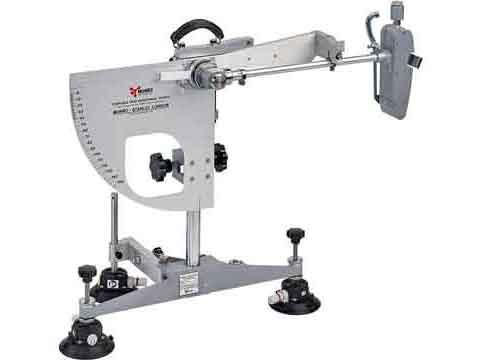What is pendulum slip testing and how does it assess slip resistance?
What is pendulum slip testing and how does it assess slip resistance?
Pendulum slip testing is a method used to assess the slip resistance of surfaces, particularly floors, in various environments such as workplaces, public spaces, and leisure facilities. It involves using a pendulum device equipped with a rubber slider that mimics the action of a shoe sole making contact with the floor.
Here's how the pendulum slip testing works and how it assesses slip resistance:
- Pendulum Device: The pendulum tester consists of a weighted arm that swings down and makes contact with the floor surface. At the end of the arm, there's a rubber slider, which replicates the interaction between a shoe sole and the floor.
- Rubber Slider: The rubber slider is made of a standardized material with specified properties. It simulates the frictional interaction between a shoe sole and the floor surface.
- Test Procedure: To conduct the test, the operator places the pendulum device on the surface to be tested. The device is typically positioned at various locations on the floor to assess different areas.
- Swinging Motion: The operator releases the pendulum arm, allowing it to swing freely and make contact with the floor surface. The arm strikes the floor with a known force, simulating the impact of a footstep.
- Measurement of Slip Resistance: As the pendulum arm swings, it measures the frictional resistance encountered by the rubber slider as it moves across the surface. The device measures the length of the swing after the initial impact, which indicates the slip resistance of the surface.
- Pendulum Test Value (PTV): The length of the swing is converted into a Pendulum Test Value (PTV), which is a measure of the slip resistance of the surface. Higher PTV values indicate better slip resistance, meaning the surface is less slippery.
- Interpretation: The PTV values obtained from the pendulum slip testing help assess the safety of the floor surface. Different standards and regulations may define minimum PTV requirements for different environments. For instance, areas with higher slip risk, such as kitchens or swimming pool decks, may require higher PTV values to ensure adequate slip resistance and safety.

Share
Recent posts
-
What is BS 7976 Pendulum?
Posted 25th June, 2024 -
What are the Laws in the UK Regarding the Danger of Slipping in Public Places
Posted 25th June, 2024 -
What is the pendulum slip rating test?
Posted 25th June, 2024 -
What Are Floor Wear Resistance Ratings?
Posted 30th May, 2024 -
Tile/floor manufacturers? This service is for you
Posted 30th May, 2024 -
Floor Wear Assessment-Types of Flooring
Posted 30th May, 2024
